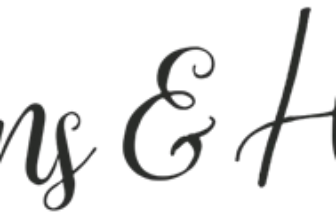
Grading Your Latex or Memory Foam Mattress
[ad_1]
When shopping for a new memory foam mattress, the bottom line is how the bed makes you feel. If you lay down on the bed and it feels like heaven, then you don’t need any expert to tell you about the superior technical properties of the foam or the exquisite detailing that makes this bed the highest quality on the market. When a bed feels good, you are comfortable, and when you are comfortable, you sleep; period.
But for some reason people are just interested in the make up of a mattress. Perhaps it makes us feel dutiful and responsible to do a little research before we lay out a chunk of cash for an important health or home purchase. Or maybe it’s because we never really get to see what’s inside a mattress and we’re curious. Whatever your reason, the following will tell you all the important technical properties of foam so you can compare different foam beds and make an informed buying decision. These properties are the same for latex and memory foam (that includes Tempur-Pedic / Tempurpedic which is also a memory foam though they have branded it “tempur material”).
Technical Properties of Latex & Memory Foam Mattresses
A foam mattress is made from at least a couple of different types of foam, sometimes more. Retailers will sometimes give the properties of the top layers of a latex or memory foam mattress in their literature. The following foam properties apply to: polyeurothane foam, latex foam, or memory foam.
Density – The measurement of the mass per unit volume, measured and expressed in pounds per cubic foot (pcf) or kilograms per cubic meter (kg/m3). For example, 1 foot square block of 5lb (pound) density foam will weigh 5lbs.
Indentation Force Deflection (IFD) – also known as Initial Load Deflection (ILD) – The measure of the load bearing capacity of flexible polyurethane foam. IFD is most often measured as the force (in pounds) required to compress a 50 square inch circular indenter foot into a four inch thick sample, typically 15 inches square or larger, to a stated percentage of the sample’s initial height. The most common ILD values are generated at 25 and 65 percent of initial height. The top layer of a memory foam bed is usually between 12 – 15 ILD. High resiliency base foam used in bedding is usually 20 – 40 IFD.
Support Factor – Support Factor = 65% IFD or 25% IFD determined after one minute of rest or recovery. Support factor can be used in conjunction with a known 25% IFD value to determine the 65% IFD value. Foams with low support factor are more likely to bottom out (compress fully) under load.
Flex Fatigue (Dynamic Fatigue) – The normal softening or loss of firmness over time and with use. Fatigue can be measured in the laboratory by repeatedly compressing a foam sample and measuring the change in IFD.
Tear Strength – The measure of the force required to continue a tear in foam after a split or break has been started and expressed in pounds per inch (lb./in.). An important property in determining suitability of foam in applications where the material is sewed, stapled, or otherwise anchored to a solid substance.
Resilience – An indicator of the surface elasticity or “springiness” of flexible foam; measured by dropping a steel ball onto the foam cushion and measuring how high the ball rebounds. Memory foam has almost no resilience. High resilience foams are used in the base layer of mattresses.
Hysteresis – Measurement of the ability to maintain original support characteristics after flexing. Generally, the firmness (IFD) is tested at 25% indentation, 65% indentation and again at 25% on the way up. Hysteresis is the percent of 25% IFD loss measured as a compression tester returns to the normal (25% IFD) position after measuring 65% compression. Lower hysteresis values (less IFD loss) are desirable. Low hysteresis in conventional foam is equal to less IFD loss in durability and fatigue tests.
Air Flow – The amount of air expressed in cubic feet per minute, that can be drawn through a 2″ x 2″ x 1″ foam sample at .5-inch water pressure differential. Higher air flow indicates a more open foam cell structure.
[ad_2]
Source by Will Robertson



